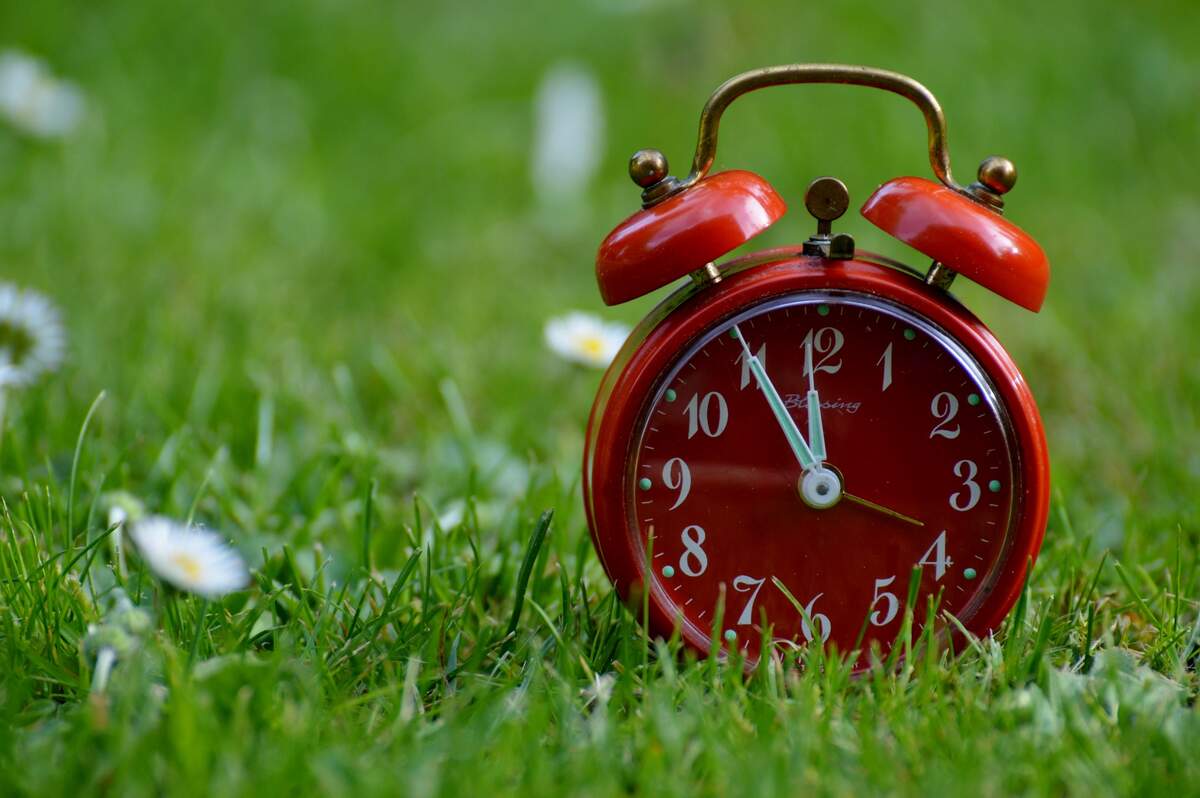

The End of Daylight Saving Time
Observed
the first Sunday in November (since 1918)
Dates
Hashtags
Sources
In the United States, daylight saving time starts on the second Sunday in March and ends today, on the first Sunday in November, at 2:00 a.m. local time. Also known as daylight savings time or daylight time, and abbreviated as DST, daylight saving time lasts for 238 days—or 34 weeks—each year, or about 65% of the year. In spring, clocks are moved ahead from 2:00 a.m. to 3:00 a.m., and in the fall they are moved back from 2:00 a.m. to 1:00 a.m. A play on words reminds everyone to "spring forward, fall back."
Daylight saving time is observed throughout most of the United States, except for two states, Hawaii and Arizona (except inside the Navajo Nation, where it is observed), and five territories: Guam, Puerto Rico, the Northern Mariana Islands, American Samoa, and the United States Virgin Islands. Many countries observe daylight saving time, while many others do not. It is generally not observed near the equator, where a time change wouldn't make a significant difference, nor in some places in the high latitudes, for similar reasons. Not many countries in Africa, Asia, Latin America, and the Caribbean observe it. For those countries who do observe it, not all observe its start and end times at the same time. Some countries observe it in some of their regions, but not in others.
Supporters of daylight saving time argue that people appreciate more daylight hours in the evening after their typical work day is finished. There's a view that daylight saving time promotes outdoor leisure activities in the summer, such as participation in outdoor sports and the attendance of sporting events. Similarly, it's thought to promote the consumption of other goods and services. Additionally, supporters assert that daylight saving time saves on electricity costs by reducing electricity spent for lighting and heating. Safety comes into play, too, with the thought being that since fewer people are outdoors after dusk, daylight saving time reduces some types of crime, like robbery and sexual assault. Finally, supporters say it is practical. Without daylight saving time, the sun would rise around 4:30 am and set around 7:30 pm in the summer. It's more practical for it to be implemented so that the sun rises around 5:30 am and sets around 8:30 pm, since people don't generally get up around 4:30 am, and tend to still be awake at 8:30 pm.
Those who oppose daylight saving time dispute the amount that it reduces electricity usage and cost. Dairy farmers tend to oppose it since their cows follow the sun, not a clock. Television and movie theaters take an economic hit from it. Some argue that it leads to less economic efficiency. Some also point to studies that show that time shifts have an adverse effect on human health.
Perhaps the first to propose a daylight saving time was Benjamin Franklin, who in his anonymous 1784 essay "An Economical Project for Diminishing the Cost of Light," which was printed in The Journal of Paris, facetiously observed that Parisians could save on candles if they got out of bed earlier in the morning. But it wasn't until well over a century later when a city first implemented daylight saving time, when Port Arthur, Ontario, did so in July 1908. The first countries to adopt daylight saving time were Germany and Austria-Hungary, which began using it in 1916 to save fuel during World War I. The rest of Europe soon followed. Although, many countries, including Germany, did away with it following the war.
In the United States, the Standard Time Act of 1918, signed into law by President Woodrow Wilson on March 19, 1918, confirmed the existing standard time zone system, and set the summer daylight saving time to begin on March 31, 1918, and then to revert on October 27. It was not a popular idea then, particularly with farmers, who had less time in the morning to milk cows and get crops to market. Daylight saving time was abolished nationally in the United States following World War I but remained a local option. New York City observed it, but rural areas surrounding it didn't. Other places eventually followed New York City's lead.
On February 9, 1942, President Franklin D. Roosevelt instituted "War Time," a year-round daylight saving time. It was in effect until September 30, 1945. Following World War II, daylight saving time was adopted by many cities east of the Mississippi River, which also were generally north of the Ohio and Potomac rivers. There was no federal law for daylight saving time between 1945 and 1966—whether it was implemented or not was decided locally. There was a patchwork daylight saving system, with varying lengths in varied cities, municipalities, and states.
The transportation industry pushed for federal regulation because of the lack of consistency. The Uniform Time Act of 1966 established a system for uniform daylight saving time in the United States. It mandated that beginning in 1967 clocks would be advanced one hour beginning at 2:00 a.m. on the last Sunday of April, and back one hour at 2:00 a.m. on the last Sunday of October. States could exempt themselves if their whole state was exempt. The law was enforced by the Department of Transportation, a new department.
Arizona and Michigan became the first states to exempt themselves, but Michigan opted in in 1972. That same year, the law was amended so that states in split time zones could exempt the whole state or the part of the state that was in a different time zone. During the 1973 oil embargo, Congress enacted a year-round daylight saving time, which began on January 6, 1974, and was to last until April 27, 1975. It was repealed mainly because of concerns about the safety of children traveling to school in the dark. The Uniform Time Act was amended in 1986 so that the start of daylight saving time was changed from the last Sunday in April to the first Sunday in April, with the end time remaining as the last Sunday in October. These were the start and end times from 1987 to 2006.
The Energy Policy Act of 2005 extended daylight saving time starting in 2007, so that it would begin on the second Sunday of March and end on the first Sunday in November. Since then, there has been a movement to make daylight saving a year-round occurrence. Those with this view think that modern lifestyles and work aren't compatible with shifting the clock each spring and fall. As referenced earlier, there is also an argument that it would save energy, because there would be less of a need for artificial light. Some states have passed legislation to make daylight saving permanent. Still, legislation would have to be passed on the national level for the state legislation to take effect, since the 1966 law allows opting out, but not making it permanent. The Sunshine Protection Act, which would make daylight saving time permanent nationally, was passed by the Senate in 2022 but failed to pass in the House of Representatives. So, for the time being, daylight saving time ends each year, and we observe that moment today.
How to Observe The End of Daylight Saving Time
- Confirm the time.
- Make sure you have set back by one hour to the new time any clocks that don't sync on their own.
- Read a book about daylight saving such as Seize the Daylight: The Curious and Contentious Story of Daylight Saving Time or Spring Forward: The Annual Madness of Daylight Saving Time.
- Learn more about daylight saving time throughout the world.
- If you're reading this ahead of time, remind others to "fall back" tomorrow.





















